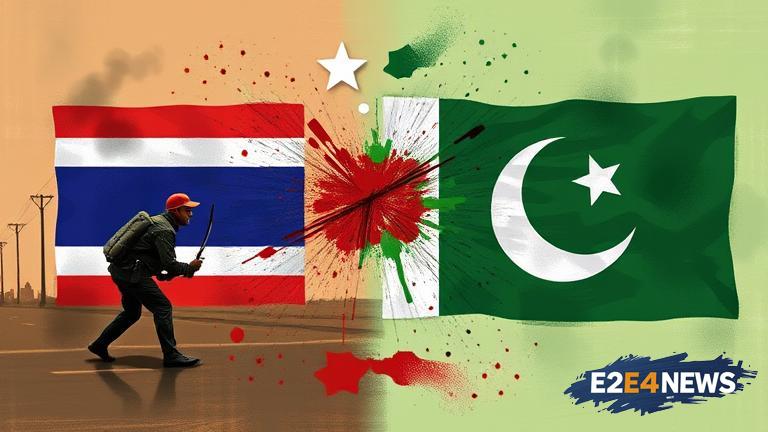The recent clashes between Thailand and Cambodia have sparked concerns about the stability of the region. The conflict, which began over a disputed border area, has resulted in the deaths of several soldiers and civilians. The situation has drawn comparisons to the longstanding dispute between India and Pakistan, which has been ongoing for decades. Both conflicts involve complex historical and cultural issues, making a resolution challenging. The Thailand-Cambodia conflict centers around the Preah Vihear temple, a UNESCO World Heritage site, which is claimed by both countries. The temple has been a source of tension between the two nations for years, with each side accusing the other of encroaching on its territory. The conflict has also been fueled by nationalist sentiment, with both governments facing pressure from their respective publics to take a strong stance. The situation has been further complicated by the involvement of other countries, including the United States, which has called for calm and restraint. The United Nations has also weighed in, urging both sides to engage in dialogue and find a peaceful resolution. Despite these efforts, the conflict shows no signs of abating, with both sides dug in and refusing to back down. The situation has significant implications for the region, including the potential for wider conflict and instability. The conflict has also raised concerns about the impact on trade and economic relations between the two countries. The Thai government has faced criticism for its handling of the situation, with some accusing it of being too aggressive. The Cambodian government, on the other hand, has been accused of being too soft. The conflict has also sparked a wider debate about the role of nationalism and patriotism in international relations. Some have argued that the conflict is a prime example of how nationalism can be used to fuel conflict and undermine regional stability. Others have argued that the conflict is a necessary response to historical injustices and a desire to protect national sovereignty. The situation has also raised questions about the effectiveness of international organizations, such as the United Nations, in resolving conflicts. The conflict has been further complicated by the involvement of other regional players, including China and Vietnam. The situation has significant implications for the future of regional relations and the stability of Southeast Asia. The conflict has also sparked a wider debate about the role of the media in shaping public opinion and influencing government policy. Some have argued that the media has played a significant role in fueling nationalist sentiment and escalating the conflict. Others have argued that the media has been too soft on the governments involved, failing to hold them to account for their actions. The situation has also raised concerns about the impact on civilians, including those living in the disputed border area. The conflict has resulted in the displacement of thousands of people, with many more affected by the violence. The situation has significant humanitarian implications, with many calling for increased aid and support for those affected. The conflict has also sparked a wider debate about the role of international law in resolving conflicts. Some have argued that the conflict is a prime example of how international law can be used to resolve disputes and promote regional stability. Others have argued that the conflict highlights the limitations of international law in resolving complex and deeply entrenched conflicts.
